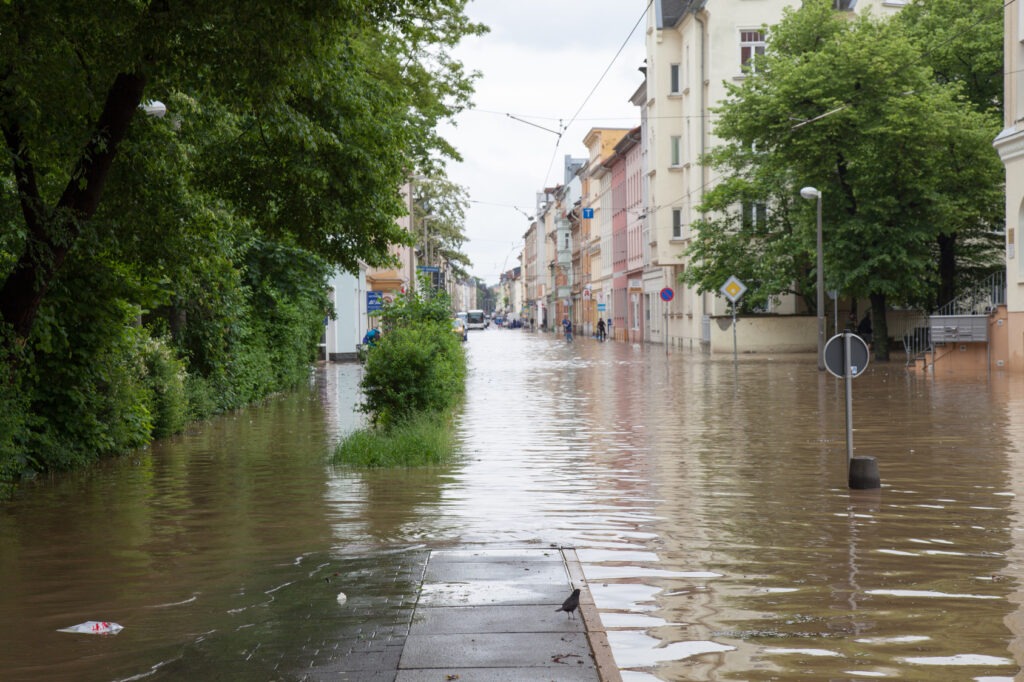
Water Damage and Flooding Statistics in Indiana
Indiana is flood prone due to the number of rivers and wetland areas throughout the state. Much of the flooding in Indiana is caused by heavy rainfall that can cause rivers and other bodies of water to overflow. The annual precipitation of the Midwest has increased between 5 and 10 percent in the previous 50 years and the rainfall on the wettest days of the year has increased by 35 percent over the same period. The risk of flooding in Indiana will only get worse as the annual precipitation in Indiana is projected to increase from 40.2 inches to about 43.1 inches by 2050.
In 2022, there were 76 flooding or heavy rain events that resulted in $18.9 million in property damage according to NOAA statistics. Of these 76 events, 30 of them involved flash flooding which is one of the most damaging and dangerous weather events. Fortunately, only two deaths occurred due to the flooding over this time. Residents of Indiana are urged to purchase flood insurance to protect their property as only around 17,000 out of 2.5 million households are insured.
Flash flooding is a common problem in Indiana as there were 25 flash flooding events in 2023 that caused $10.8 million in property damage and two deaths according to statistics from NOAA. Indiana is also prone to river flooding due in part to precipitation as well as flooding from snowmelt. If your home or business is affected by flooding in Indiana, it is important to call a local water damage restoration professional right away that can dry your property and restore the damage.

History of Floods in Indiana
Indiana has experienced several major flooding events dating back to the early 1900s. The following are the most significant Indiana floods:
- The Great Flood of 1913: The Great Flood of 1913 occurred in late March of 1913 when several days of heavy rainfall caused major rivers in the central and eastern U.S. to flood. In Indiana, this flooding affected most of the state, causing more than 100 deaths and ruining the state’s infrastructure. Around seven percent of the state’s total population was left homeless because of the flooding. The amount of damage is equivalent to billions of dollars in today’s money.
- The Great Ohio River Flood of January 1937: In January of 1937, the Ohio River, which forms the southern border of Indiana, flooded due to heavy rains throughout the Ohio River Valley. It is still the worst flood on record for many of the affected communities along the Ohio River as it resulted in 350 deaths and left almost one million people homeless. The damage is estimated at around $250 million in 1937 dollars which would equate to over $3.3 billion in today’s money.
- Northern Indiana Floods of March 1982: The Northern Indiana Floods of 1982 were caused by rapidly melting snow. During the winter of 1981-82, northern Indiana had a record snowpack of 3-7 inches that melted quickly when one inch of rain fell in March 1982. The rapid snowmelt caused extensive flooding that resulted $50 million in damage in 1982 dollars and forced more than 10,000 people to leave their homes. However, a major sandbagging effort protected downtown Fort Wayne from the flooding which prevented an estimated $30 million in damage.
- January 2005 Flood: Between December 22, 2004 and January 19, 2005, southern Indiana experienced a snow storm that brought up to 30 inches of snow in some areas, followed by a major ice storm just north of Indianapolis. Rain throughout central Indiana melted the snow and ice, resulting in extensive flooding that was the worst many of the affected areas had experienced in decades. The flooding shut down interstates and left certain areas cut off from the rest of the state due to flooded roadways.
- June 2008 Flood: The June 2008 flood was caused by heavy precipitation that resulted in overflowing rivers. More than 25,000 people were affected by the flooding and four people lost their lives. The flooding was severe enough to isolate the city of Columbus and affect 9 percent of Indiana’s total farmland. More than $1 billion in damages occurred as a result of the June 2008 Flood.
Fire Damage Statistics for Indiana

Home and structure fires can happen at any time in Indiana, like in any other state, but fortunately, fires in Indiana cause a rate of deaths and injuries that is lower than the national average. Indiana experienced a rate of 1.3 deaths and 4.9 injuries per 1000 fires in 2021 compared to national averages of 2.3 deaths and 7.2 injuries according to statistics from the NFIRS. For residential fires, there were 4.8 deaths and 15.4 injuries per 1000 fires compared to national averages of 6.5 deaths to 20.9 injuries.
The following is a comparison of the death percentage for each type of fire incident and national averages in Indiana in 2021:
- Structure fires: 90% (national average: 74.5%)
- Residential structure fires: 85% (national average: 70.9%)
- Vehicles: 5% (national average: 21.2%)
- Outside: 5% (national average: 3.0%)
The following is a comparison of the injury percentage for each type of fire incident and national averages:
- Structure fires: 80.8% (national average: 82%)
- Residential structure fires: 75.3% (national average: 74.1%)
- Vehicles: 5.5% (national average: 9.2%)
- Outside: 9.6% (national average: 5.7%)
The following is a comparison of firefighter injury percentage for each type of fire incident and national averages:
- Structure fires: 73.1% (national average: 79%)
- Residential structure fires: 53% (national average: 56.7%)
- Vehicles: 15.4% (national average: 7%)
- Outside: 11.1% (national average: 13%)
Fires are as dangerous as they are damaging as there were 73 fatalities due to fires in Indiana in 2023 according to the Indiana Department of Homeland Security. If a fire occurs within your home or business, your top priority is to evacuate the building and ensure everyone is safe, and then call the fire department to put out the fire. Once the fire is out, you need to turn your attention to the restoration of the property as damage from fire and smoke will continue to get worse. A local fire damage restoration professional can help clean up and rebuild your property to restore its pre-fire state.
Indiana Water and Fire Restoration Services and Leads

There are many reputable fire and water damage restoration contractors throughout Indiana that are ready to help homes and businesses that have been affected by fires or floods. You can call for emergency restoration services 24 hours a day.
You can reach a local Indiana disaster restoration contractor by calling (888) 915-7197.
Are you a disaster restoration company looking for more leads? Check out our registration page and see how you can join our lead generation program!



